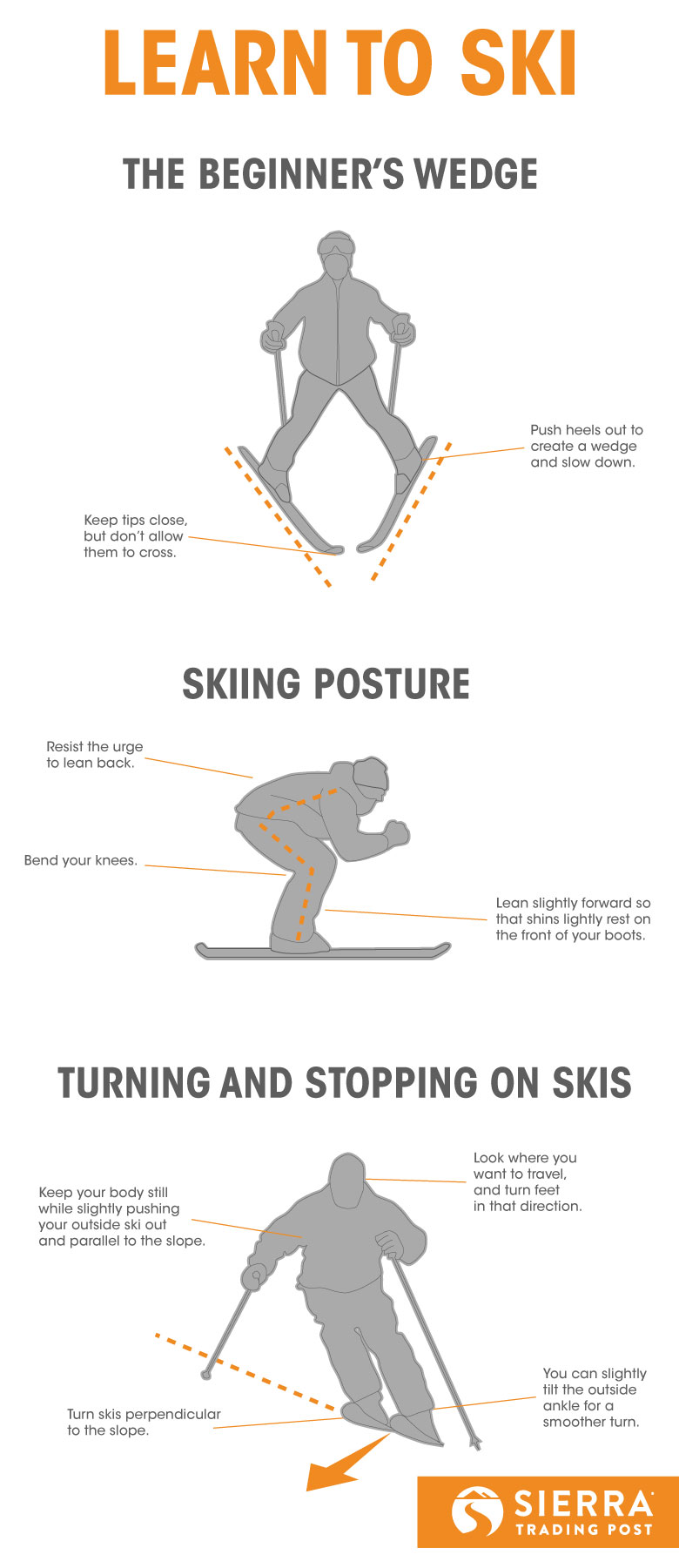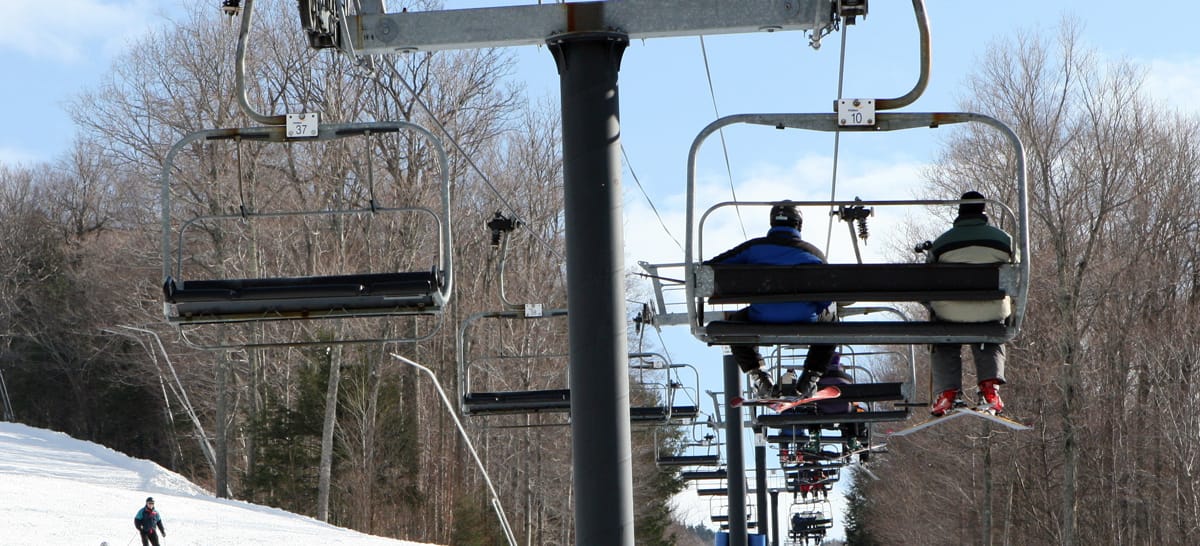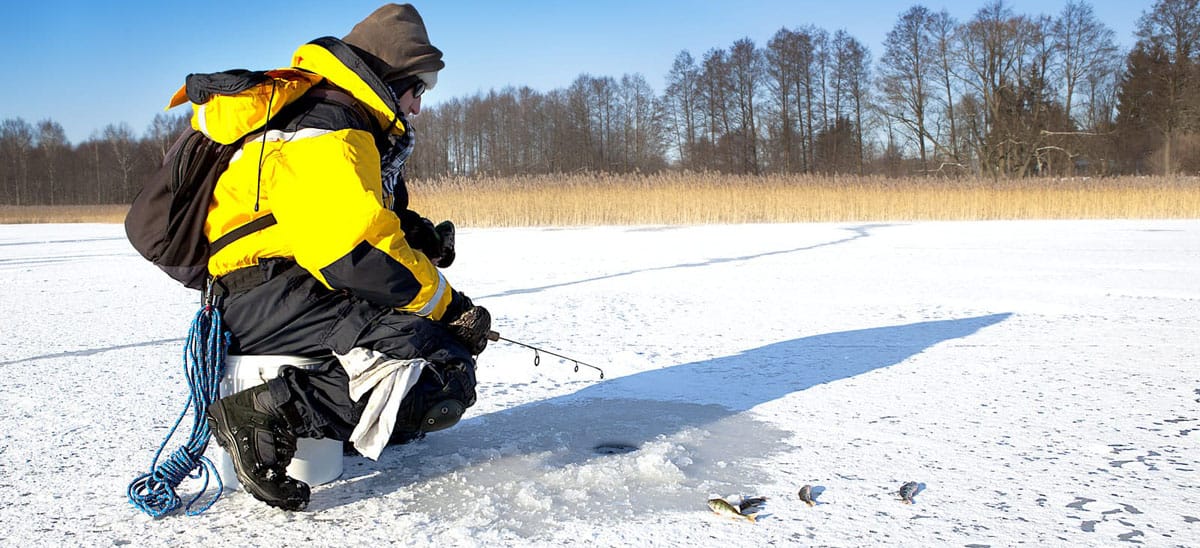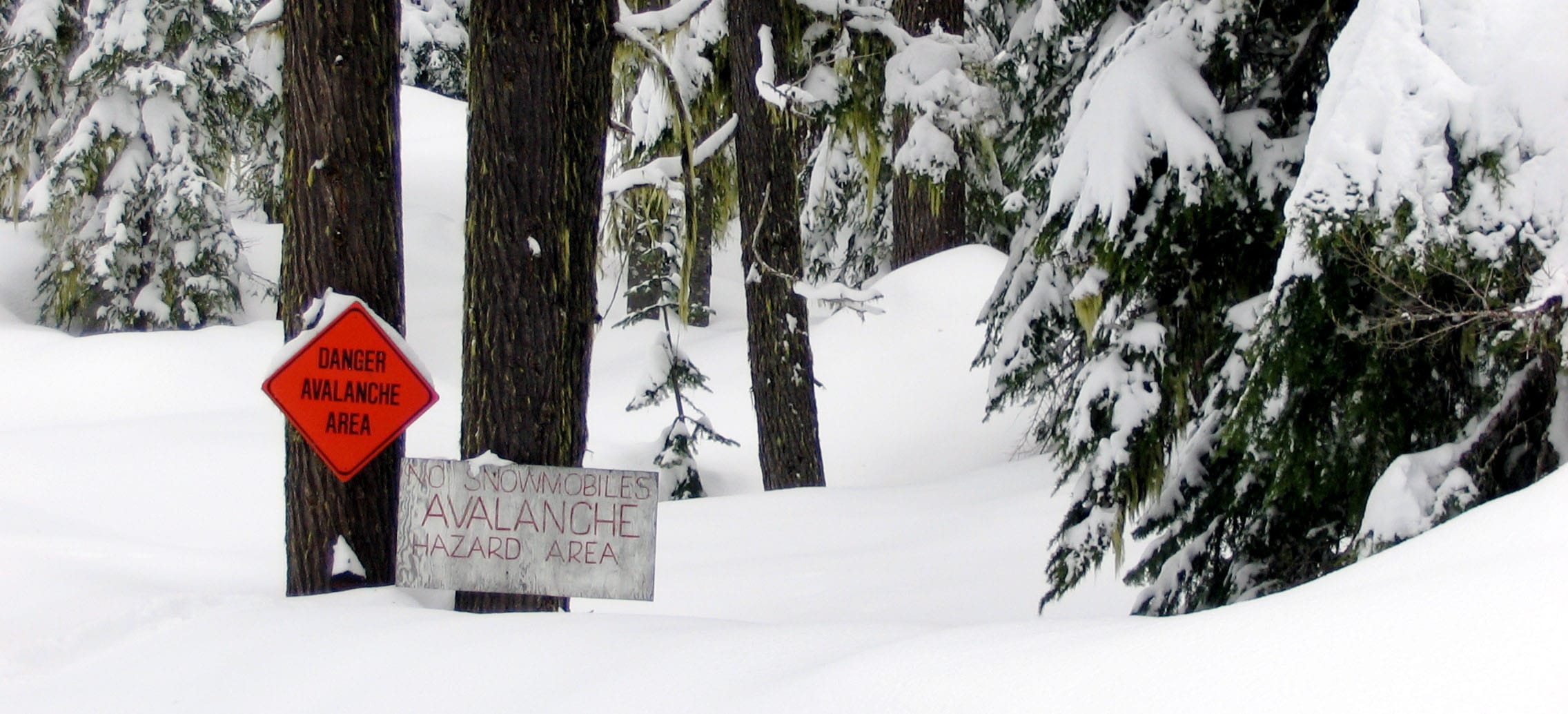How to Start Skiing
Learning to ski can be pretty challenging at first, especially if you start on a long ski run in the mountains. But if you relax, focus on the basics and gain a comfortable confidence on your skis, you'll be shredding up the resort runs in no time.
1. Dress properly for a day on the mountain
Before you even step into your skis and head to the chair lift, you need to make sure you're wearing the right gear and clothing to tackle the slopes in comfort. Not sure what to wear? We lay it all out for you here.
Learn How to Move on Alpine Skis
2. Get comfortable on your skis. The next thing to do before you get to the top of the mountain is get comfortable on your skis. Move around and find your balance by moving forward on your skis on flat land. Place your skis parallel to one another, reach forward with your poles, slightly angle them towards you, and push them down into the snow and back to move forward. Keep your skis parallel; moving your skis back and forth won't move you forward because your heels aren't free like they are in cross-country skis.
You can also try "skate-skiing" by angling your skis in a "V", with the tips spread. Push your skis out and backwards to move forward. Skate skiing will take more practice, but is more efficient at moving forward on flat land.
Once you feel comfortable moving around on your skis, perfect your skiing posture and turns on the "bunny hill", or the small hill that's used for beginner lessons and young skiers.
3. Practice perfect posture. Your skiing posture might feel a little strange at first. Oftentimes, new skiers want to lean backwards and throw out their arms in an intuitive attempt to slow down. Instead, try this: Bend your ankles, waist and knees enough so that you can feel your shins on the front of your boots. As you start out, you'll want to feel the weight evenly through your feet.
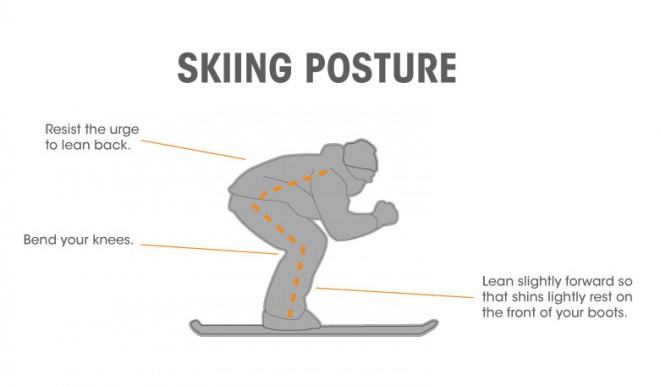
As you gain confidence, lean forward slightly and feel your weight in the balls of your feet. Put your hands through the wrist straps on your ski poles and keep them at your side. Once you feel comfortable in your skiing posture, you'll gain more confidence and control in your turns and stops.
Start Skiing Downhill
4. Try the beginner's wedge, or "snowplow". To stop yourself from sliding backwards, spread your ski tips to form a "V". Similarly, when going forward on a slope, you can slow down and come to a stop by spreading your heels and bringing the tips of your skis together. This is what some ski instructors call the "pizza slice" or "snow plow." It's a classic first move taught in ski schools and lessons to beginners. Be sure you don't let your ski tips cross.
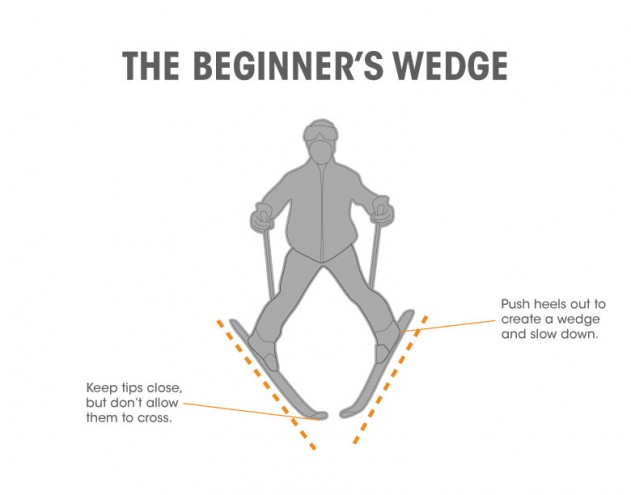
You can turn slowly while you snowplow by bending your knees, moving the leg opposite of the direction you want to go forward (if you want to turn right, push your left leg forward), and then straitening up to stand tall. Practicing your snowplow turns without poles can be helpful -- then you can use your free hands to slowly push your turning leg forward.
Learn to Carve
5. Learn how to turn and stop with your skis parallel. Finally, we get to the key of a great day of skiing -- confident control on parallel skis. The beginner's wedge isn't an efficient way to slow down or stop once you get to steeper slopes, so you'll need to learn how to turn and stop while keeping your skis parallel.
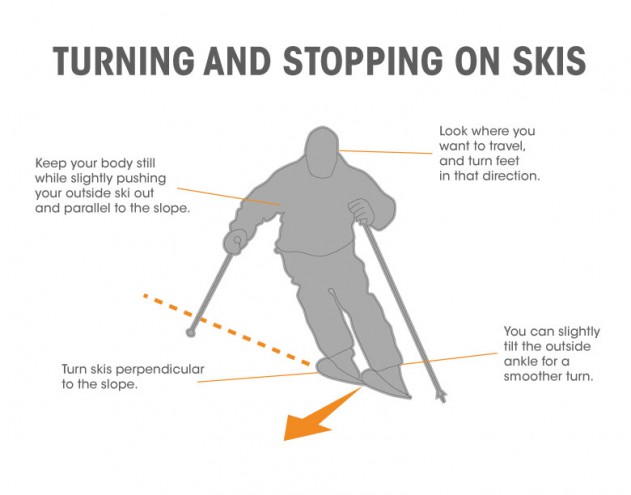
Once you start feeling more comfortable and confident on your skis, it's time to practice turning and stopping with skis that remain parallel to each other. You can transition from snowplow to parallel skis by starting your turns in snowplow and finishing them with parallel skis; when turning right, you can shift weight to your left foot, lift your right ski and put it down so it is parallel by the end of the turn.
Next, practice turning and stopping with skis parallel by putting most of your weight on the downhill, or outside ski. So, if you're headed straight down the mountain and want to turn right, you put your weight on your left leg, similar to how you pushed your left leg forward to turn right in snowplow. Remember not to sit or lean back; keeping most of your weight in the balls of your feet will help you maintain control.
When you're ready to turn in the opposite direction, straighten your legs and waist -- pushing your weight equally into both skis. Then, transition your weight to your right leg to turn left.
Be Safe
6. Look where you're going. One of the most common beginner mistakes is looking at the tips of your skis instead of where you're going. Always keep your head and eyes forward, or in the direction in which you're headed. Not only do you want to look for possible obstacles, but this will help you keep your balance and turn, as well.
7. Fall uphill and on your side. You're bound to fall a few times as you're learning to ski. You can keep yourself and others safe by falling on your side instead of swerving and losing control. If you feel yourself getting out of control, try to fall uphill and land on your shoulder and hip.
Basic Rules for New Skiers
1. Get familiar with the trail map. It's important to be familiar with the mountain and get to know the runs that are ideal for your skill level. All ski runs will be marked with a symbol that denotes its difficulty level:
- Green Circle = Beginner
- Blue Square = Intermediate
- Black Diamond = Advanced
- Double Black Diamond = Advanced - Expert
- Double Black Diamond with "EX" = Expert only
2. Stick to beginner-level slopes. As you learn to ski and gain your confidence, it's best to stick to beginner-level slopes. If you are having a hard time maintaining control on the bunny hill, don't go down a green slope until you're ready. Same goes for moving from green to blue hills. If you "level up" before you're ready, you run the risk of injuring yourself and others. It's always your responsibility to remain in control as you ski, so only ski where you know you can ski confidently.
3. Yield to skiers and snowboarders in front of you. Everyone downhill from you has the right of way, so if someone falls in front of you or unexpectedly turns in front of you, it's on you to avoid them. That's why it's always wise to keep a good distance between yourself and other skiers.
4. Don't stop in the middle of the slope or in a blind spot. If you need to stop and take a break, try to take your break on the edges of the ski run or somewhere where all skiers are slowing down, like at a crest of a hill. Never stop in a location where people uphill can't see you.
Now you've got your guide on how to ski and a few basic ski rules for navigating the ski resort. What's next? We've got even more tips for beginning skiers here, and tons of information on buying your ski gear here. Any other questions? Just let us know. And have fun out there!
